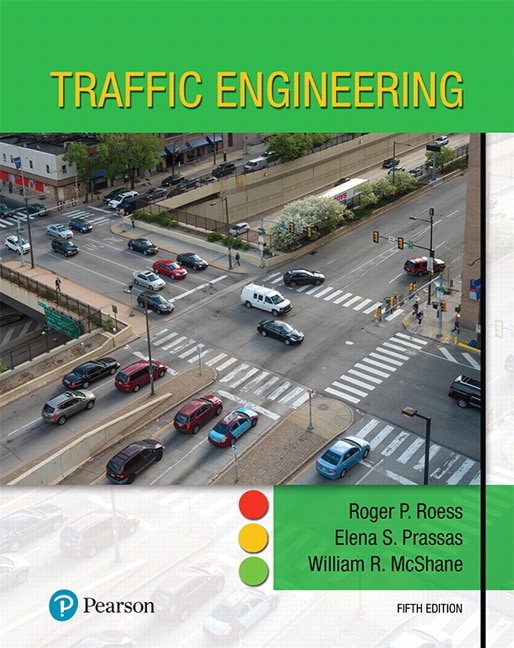
Traffic Engineering, 5th edition
- Roger P. Roess
- , Elena S. Prassas
- , William R. McShane

- Listen on the go
Learn how you like with full eTextbook audio
- Find it fast
Quickly navigate your eTextbook with search
- Stay organized
Access all your eTextbooks in one place
- Easily continue access
Keep learning with auto-renew
Traffic Engineering focuses on the key engineering skills required to practice traffic engineering. It presents both fundamental theory and a broad range of its applications to solve modern problems and gives students an understanding of and appreciation for planning, design, management, construction, operation, control and system optimization. An emphasis on modern data collection tools and methodologies provides students with the details of how modern technology is used in the collection, reduction and analysis of data.
The 5th Edition includes the latest in industry standards and criteria, new material and updates to existing material, as well as new homework problems. Links to several new websites are included, which both you and your instructors will find valuable.
Published by Pearson (July 14th 2021) - Copyright © 2019
ISBN-13: 9780137518784
Subject: Civil Engineering
Category: Transportation Engineering
I. Basic Concepts and Characteristics
- Introduction
- Transportation Modes and Characteristics
- Road-User, Vehicle, and Roadway Characteristics
- Communicating with Drivers: Traffic Control Devices
- Traffic Stream Characteristics
- The Concepts of Demand, Volume, and Capacity
- Level of Service and the Highway Capacity Manual: History and Fundamental Concepts
- Intelligent Transportation Systems
II. Traffic Studies and Programs
- Traffic Data Collection and Reduction Methodologies
- Traffic Volume Studies and Characteristics
- Speed, Travel Time, and Delay Studies
- Highway Traffic Safety: An Overview
- Parking: Characteristics, Studies, Programs, and Design
- Traffic Impact Studies and Analyses
III. Interrupted Flow Facilities: Design, Control, and Level of Service
- The Hierarchy of Intersection Control
- Traffic Signal Hardware
- Fundamentals of Intersection Design and Layout
- Principles of Intersection Signalization
- Fundamentals of Signal Timing and Design: Pre-timed Signals
- Fundamentals of Signal Timing and Design: Actuated Signals
- Signal Coordination for Arterials and Networks
- Capacity and Level of Service Analysis: Signalized Intersections–The HCM Method
- Planning-Level Analysis of Signalized Intersections
- Urban Streets and Arterials: Complete Streets and Levels of Service
- Unsignalized Intersections and Roundabouts
- Interchanges and Alternative Intersections
IV. Uninterrupted Flow Facilities: Design, Control, and Level of Service
- An Overview of Geometric Design of Roadways
- Capacity and Level of Service Analysis: Basic Freeway and Multilane Highway Segments
- Capacity and Level of Service Analysis: Weaving Segments on Freeways and Multilane Highways
- Capacity and Level of Service Analysis: Merge and Diverge Segments on Freeways and Multilane Highways
- Operation and Analysis of Freeways and Highways